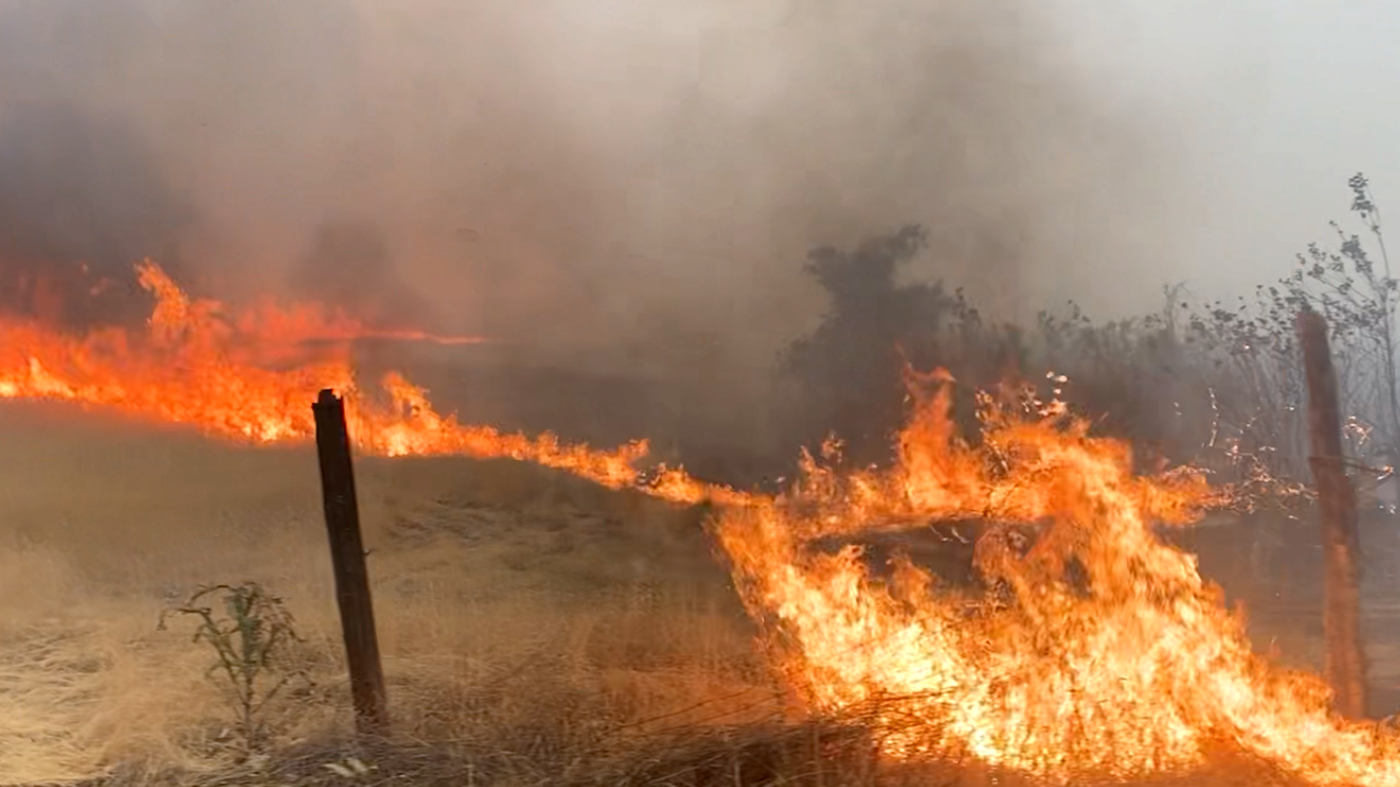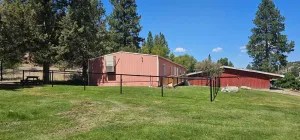9/18 Letters to the Editor
Published 5:00 pm Tuesday, September 17, 2002
Correction: The Dalles is located in Wasco County
Trending
In the Sept. 4 edition of your paper in an article titled, “Court OKs bioterrorism nurse,” you wrote: “When cult members infected more than 700 citizens of The Dalles with salmonella, Sherman County found itself in a crisis situation.”
I am sure that you meant to say “Wasco County,” since that is where The Dalles is geographically located. I was living in Dufur, a small town 13 miles south of The Dalles, in Wasco County, at the time when the cult members poisoned salad bars throughout The Dalles.
Carol Jennings
Trending
Redmond
Managed forests show signs of health, vitality
I was a Grant County resident until 1995, and still read the Blue Mountain Eagle, after my father Leo Johnson is done with it. I greatly enjoy keeping up with what is happening in the area, and seeing faces of those I used to know. Hi to all who may remember me.
I am responding to an article, the paper’s editor, David Carkhuff, had in the Aug. 28, edition: “Yes, America, big trees do burn.” While living in John Day, I made a trip to Victor, Mont., to take some belongings left by a friend. On the second day there, he said let’s go pick blueberries. So we drove up the creek, as he was nestled up against the mountain edge.
The very large ponderosa pine trees were lovely and beautiful. Then we came to the trailhead, which was land set aside, which had not been touched in many decades. It was like night and day, this side of the line, lush thriving large trees, the other side decay and ruin. Only a very few small trees and young seedlings existed here, with huge gigantic trees everywhere, all on their sides, and in a very bad state of rotten decay, and signs of a very hot fire at one time, years ago. I was amazed at the lack of new replacement growth. It looked like World War III had hit this area.
I was amazed at the difference, it looked worse then anything I had every seen; oh, such waste I thought to myself. I saw trees up to four or five feet in diameter, laying every which way, making it virtually impossible to transverse the area, I don’t see how larger animals like deer and such could even pass through it very easily. Later on we took other trips about the Bitterroot area, I saw other stands of older forest off limits to logging. Here, too, I saw stands of large trees dying from drought and beetle infestation.
Yes, larger trees may not burn as easily right away, but with age, disease, drought and bugs, they will in time. This scene shows the truth, and was ever etched on my mind, I will never forget it. After normal logging and clear cutting, and being replanted, it does not bring up visions of dread and doom, like this scene did. Always with normal logging, the forest starts over and renews itself so much faster; it is alive and green and renewed again, and provides a new home to animals. We were put here to manage the Earth, not rape it, but not let it rot away and do nothing with it either.
David Johnson
Waterford, Calif.
Ferrioli ‘hypocritical’for questioning agency
Several items from the Sept. 4 edition of the Blue Mountain Eagle deserve comment.
First, at a recent DEQ meeting in Monument Senator Ferrioli once again displayed his profound ignorance of natural processes and how they are influenced by human activities. He grandly announced that stream temperatures are solely influenced by Mother Nature, not human activities and “questioned” the science behind the 64 degree rule. Where is his peer reviewed science? Anyone can “question” anything and the senator is hypocritical in bullying agency personnel while providing absolutely no support for his own naive ideas. An extensive body of scientific literature exists documenting how logging, grazing, dams, and irrigation diversions raise stream temperature. Senator Ferrioli is co-chair of the legislature’s Joint Committee on Natural Resources for the whole state, and his failure to inform himself about these issues is shameful, inexcusable and borders on the criminal.
Information is readily available. One recent report summarizes 16 different studies showing an average stream temperature increase of 8 degrees F due to logging and states that “forest practices that open small streams to direct solar radiation….increase stream temperatures.” Of course, small streams flow into big streams. Further, “these principles are well documented by research throughout the country.” Another study found a 12-degree F increase in water temperature due to grazing which also reduces stream shading. Head-in-the-sand denial of the effects of human activities isn’t going to change these findings.
Second, Mr. Casey refers in his letter to the “dead and dying trees” that he wants to log. This term is recited over and over again by pro-logging interests, but is never substantiated by any sort of objective inventory data. How many trees? How big? Where? What are they dying of? What species? I have seen dead trees and dying trees on the Malheur Forest, but they are too few and too scattered to be profitably logged. If Mr. Casey wants to be taken seriously, he needs to provide hard data from a disinterested source and not just sing the same old “dead and dying trees” refrain.
Finally, the editor has chosen once again to play the blame game with regard to forest thinning. The Forest Service has done a credible job of thinning dense patches of fire-prone young trees over the years, a fact Mr. Carkhuff seems constitutionally incapable of acknowledging. It is well and good that private timber owners have thinned their land, but if they had 1.4 million acres to worry about, it might take them awhile also. The way to get the job done responsibly and quickly is to make sure Congress funds fuel reduction thinning adequately and consistently, without weakening environmental safeguards.
John Shafer
Dallas
Mannix intends to improve Oregon’s business climate
Out of all the 50 states, Oregon is ranked No. 1 for having the highest unemployment rate. Why is the unemployment rate so high? It’s because Oregon’s current bureaucracy is not friendly toward businesses that cause the unemployment.
Kevin Mannix says that, as Governor of Oregon, he will improve the business climate to provide more jobs. He promises to cut government regulations by about 50 percent in order to reduce the excessive regulations that have kept our unemployment rate so high. This will attract new businesses to the state and help the businesses we have. Mannix will also aggressively use the governorship to invite job-producing businesses to the state.
This is the kind of leadership Kevin Mannix will provide as Oregon’s next governor.
Calvin Smith
Echo
Reader encourages proper voter registration, participation
As I feel strongly that exercising our privilege of being able to vote on all the issues and candidates that are running for various offices, I am submitting this “Letter to the Editor” to serve as a reminder to the voters to check into whether they are properly registered to do so.
As you are aware, Oregon votes by mail. This process should make this an easier means for you to be casting your ballot.
First, you must be currently registered with the Grant County Clerk, located in the Grant County Courthouse in Canyon City. She needs your correct current address. Deadline for registration is Oct. 15, 2002.
Second, those who have voted before in Grant County, but have had an address change of any kind must get the changes of address to the clerk’s office by the Oct. 15 deadline.
Returning undeliverable ballots is costly and in view of that, you may not receive your ballot.
Voter turnout for Grant County in the last general election was very good, so let’s continue this practice.
Ella Baucum
Canyon City
The Eagle’s obituary policy questioned
Anyone who has ever written a loved one’s obituary knows how difficult it is to condense a person’s life into a few short paragraphs. When that obituary comes out in our county paper shortened, edited and important information is omitted it is truly disheartening.
How do I explain to my sister that her son’s names were omitted? To my father that the businesses they worked so hard to build were also omitted? To my other sister that her son’s name was put in the wrong place.
For the people who would like a copy of the original, correct obituary, please contact me at 421-5170 and I will be happy to send you a copy.
To the Blue Mountain Eagle, I hope you can explain your editing to my family.
Sheila Johnson-Carter
Long Creek
Editor’s note:
We regret that information was inadvertently omitted from Shirley McBride Christopher’s obituary in the Sept. 11 issue of the Blue Mountain Eagle. The obituary is being rerun in this issue.
We realize most people do not use the obituary section often. To help readers and those submitting obituary information, we are including a notation that appears on our obituary form:
“The Blue Mountain Eagle offers two separate methods for publishing information about deaths.
1) Basic information for record of death and death notices are published free of charge using information listed on this form. Please remember that an obituary is a matter of record and not a eulogy. For that reason, submitted information is subject to editing. Youth under the age of 19 will be referred to by their first name; 19 or older, as Mr. Miss or Mrs.
2) For those wishing to include more detailed information and have more control over wording and content, paid ads are available. Pricing depends on amount of space used at a per inch rate. For more information, contact the Blue Mountain Eagle at 195 N. Canyon Blvd., John Day, OR 97845 or call (541) 575-0710.”
A shortened version of this policy appears on the bottom of the “Records” page each week.
It is best if obituaries are submitted using our form or typewritten, although handwritten story-form obituaries are accepted. Submitted information will be edited to fit our format.
Many newspapers routinely charge for publishing obituaries.









